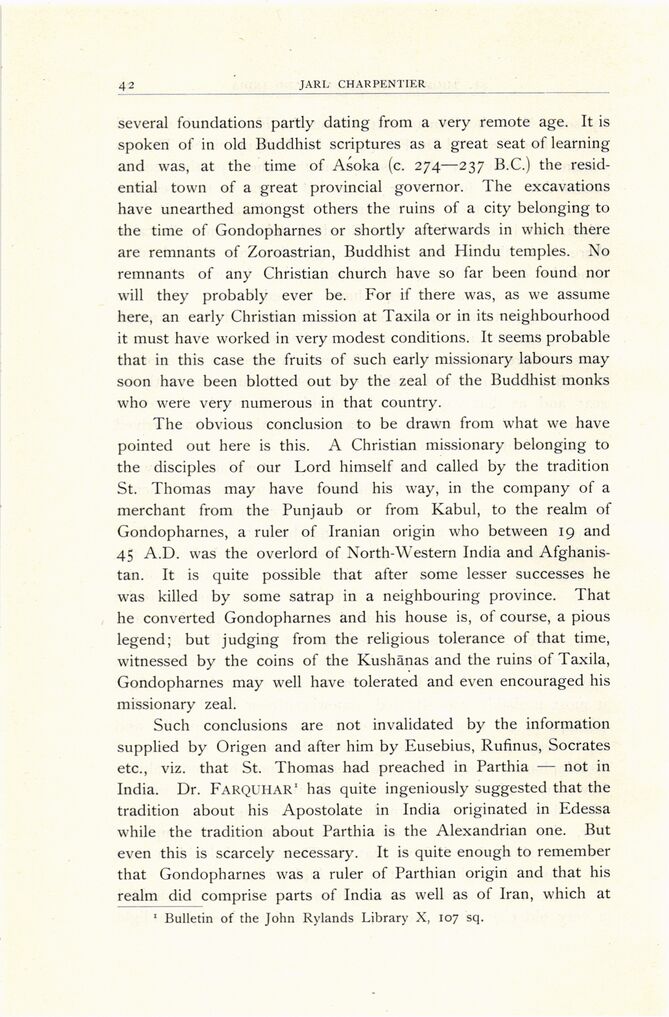
Full resolution (JPEG) - On this page / på denna sida - I. Undersökningar - Jarl Charpentier, St. Thomas the Apostle and India

<< prev. page << föreg. sida << >> nästa sida >> next page >>
Below is the raw OCR text
from the above scanned image.
Do you see an error? Proofread the page now!
Här nedan syns maskintolkade texten från faksimilbilden ovan.
Ser du något fel? Korrekturläs sidan nu!
This page has never been proofread. / Denna sida har aldrig korrekturlästs.
3 2
JARL CHARPENTIER
several foundations partly dating from a very remote age. It is
spoken of in old Buddhist scriptures as a great seat of learning
and was, at the time of Asoka (c. 274—237 B.C.) the
residential town of a great provincial governor. The excavations
have unearthed amongst others the ruins of a city belonging to
the time of Gondopharnes or shortly afterwards in which there
are remnants of Zoroastrian, Buddhist and Hindu temples. No
remnants of any Christian church have so far been found nor
will they probably ever be. For if there was, as we assume
here, an early Christian mission at Taxila or in its neighbourhood
it must have worked in very modest conditions. It seems probable
that in this case the fruits of such early missionary labours may
soon have been blotted out by the zeal of the Buddhist monks
who were very numerous in that country.
The obvious conclusion to be drawn from what we have
pointed out here is this. A Christian missionary belonging to
the disciples of our Lord himself and called by the tradition
St. Thomas may have found his way, in the company of a
merchant from the Punjaub or from Kabul, to the realm of
Gondopharnes, a ruler of Iranian origin who between 19 and
45 A.D. was the overlord of North-Western India and
Afghanistan. It is quite possible that after some lesser successes he
was killed by some satrap in a neighbouring province. That
he converted Gondopharnes and his house is, of course, a pious
legend; but judging from the religious tolerance of that time,
witnessed by the coins of the Kushänas and the ruins of Taxila,
Gondopharnes may well have tolerated and even encouraged his
missionary zeal.
Such conclusions are not invalidated by the information
supplied by Origen and after him by Eusebius, Rufinus, Socrates
etc., viz. that St. Thomas had preached in Parthia — not in
India. Dr. Farquhar’ has quite ingeniously suggested that the
tradition about his Apostolate in India originated in Edessa
while the tradition about Parthia is the Alexandrian one. But
even this is scarcely necessary. It is quite enough to remember
that Gondopharnes was a ruler of Parthian origin and that his
realm did comprise parts of India as well as of Iran, which at
’ Bulletin of the John Rylands Library X, 107 sq.
<< prev. page << föreg. sida << >> nästa sida >> next page >>